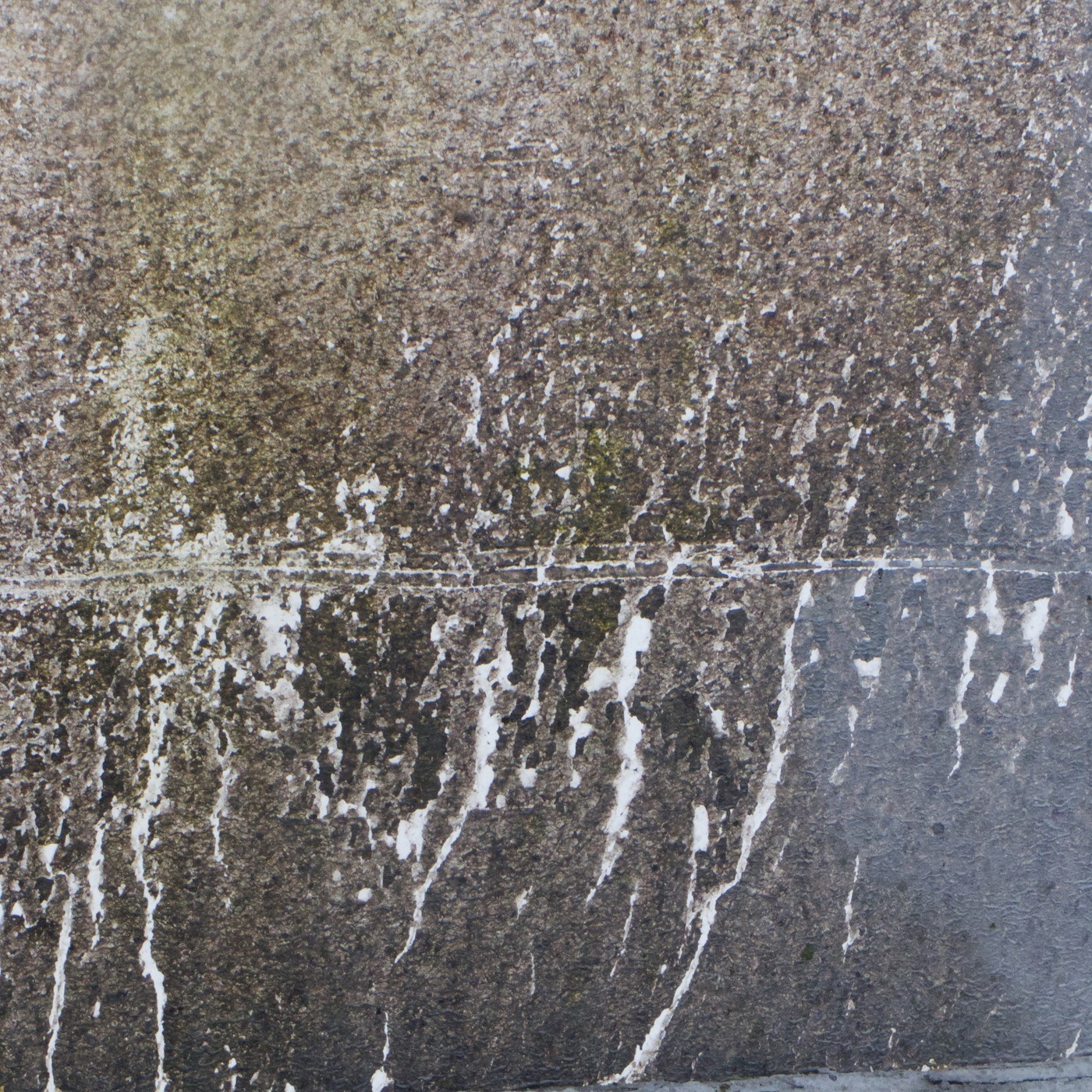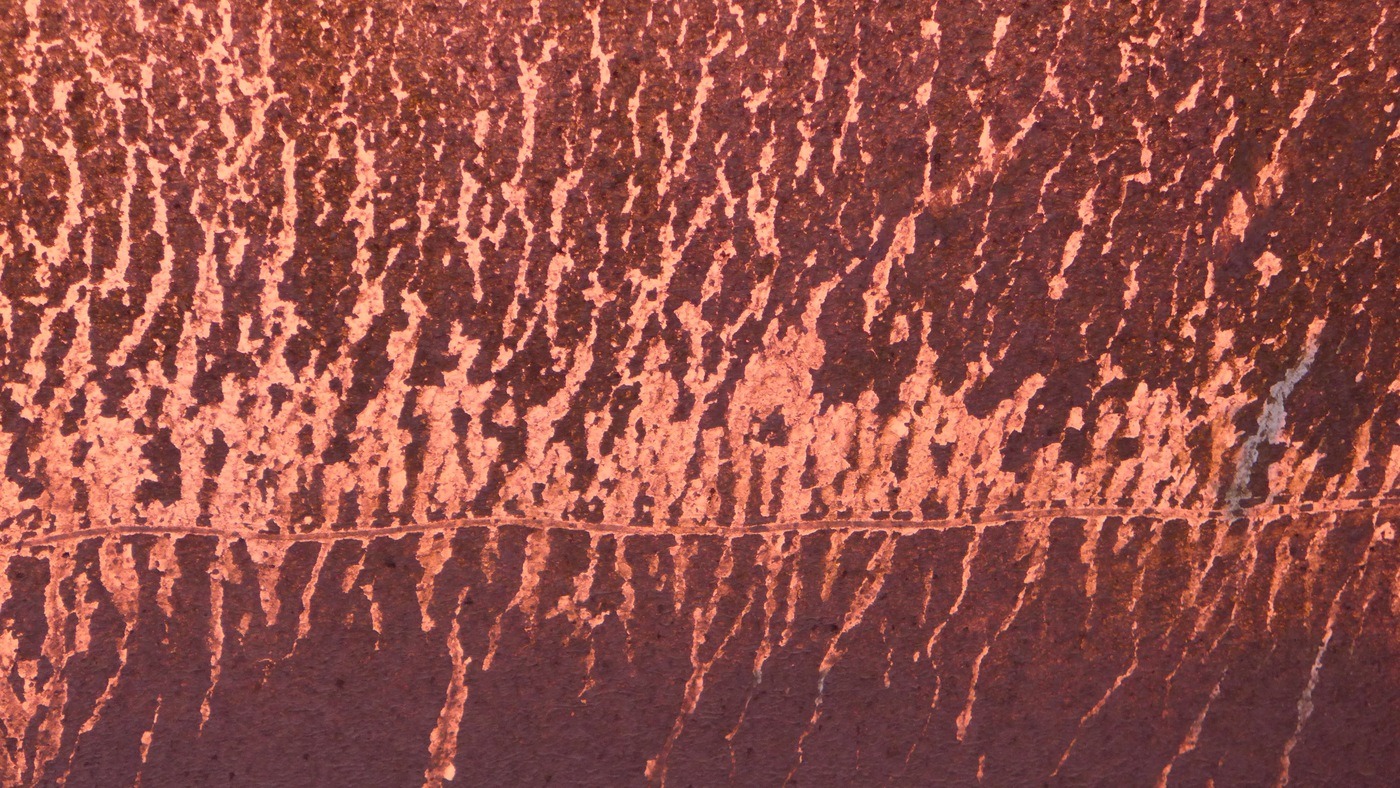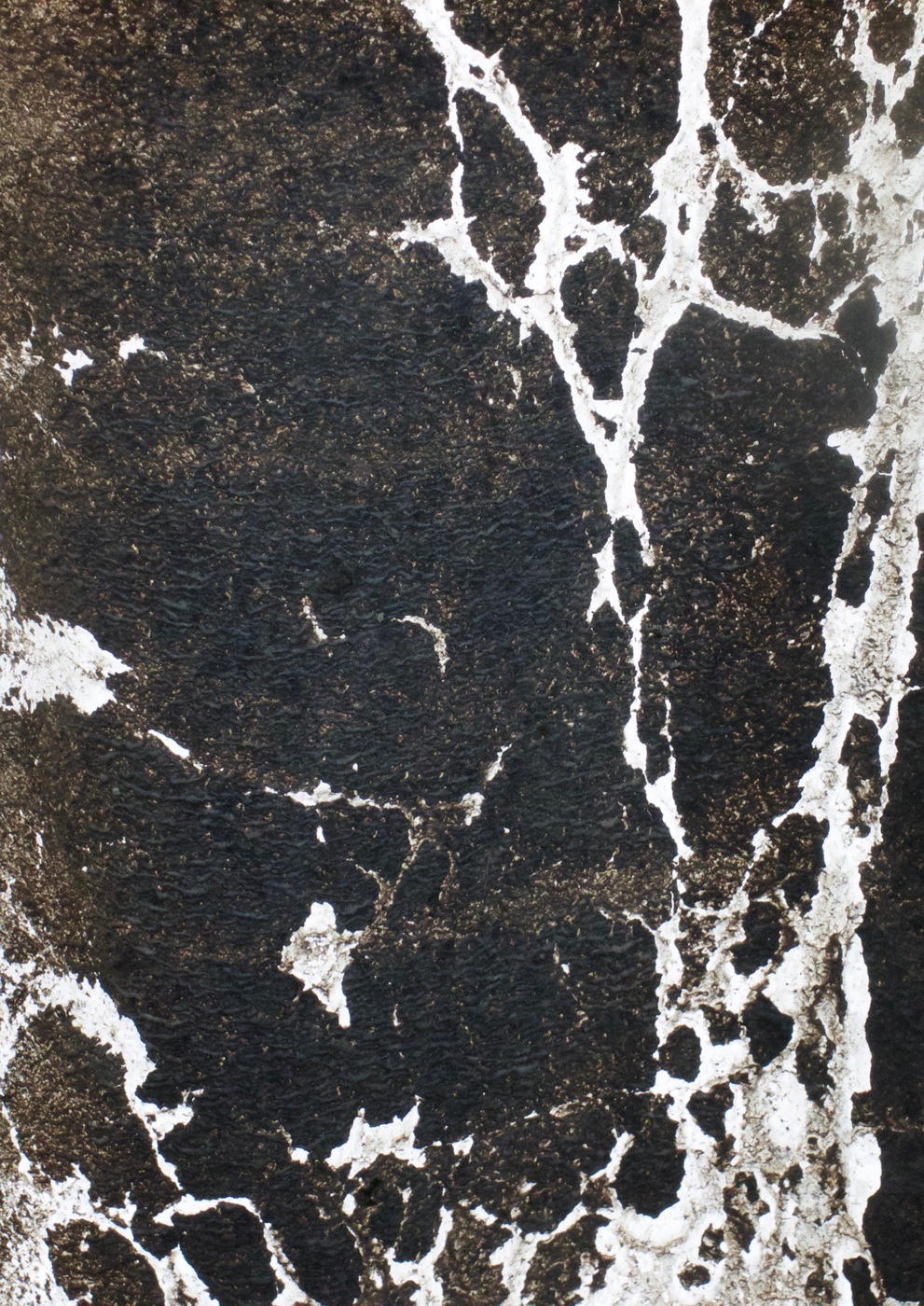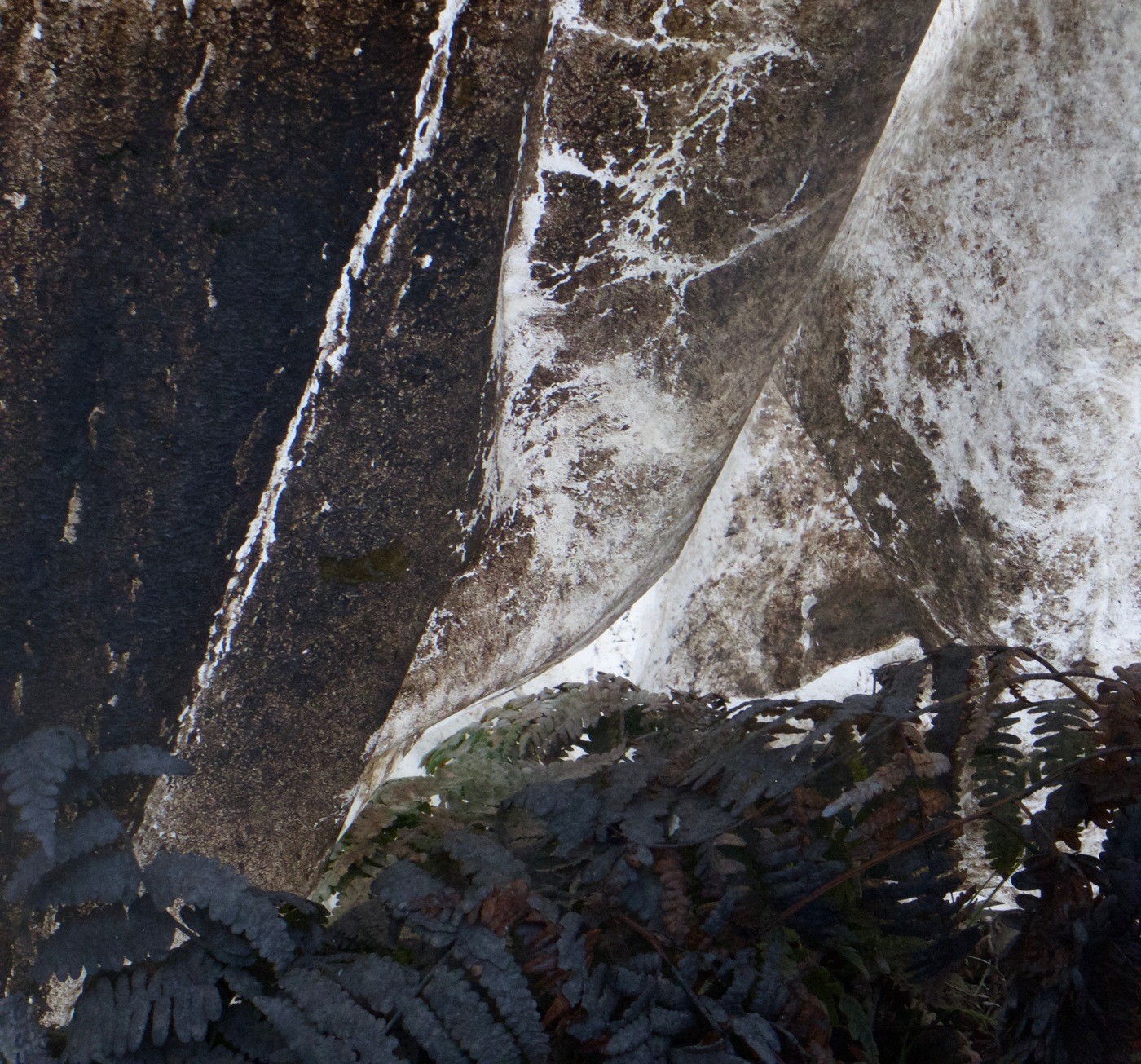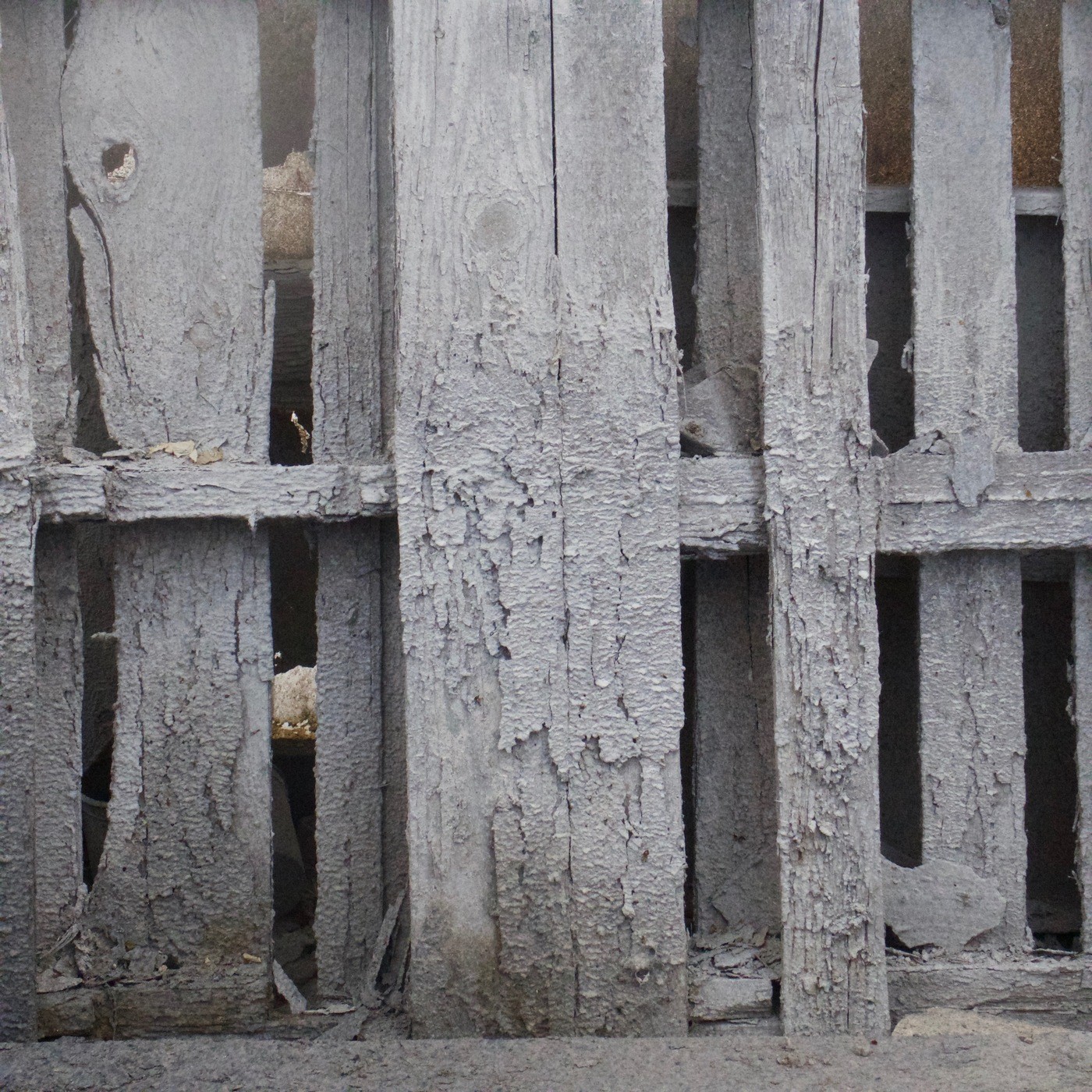As smooth as our tables come out, working with concrete (or any furniture) means some messiness, even with even the cleanest and greenest of methods. Fortunately, messiness can be inspirational at the right moments, and not so different than art. Sunsets and season changes transform a mess in different ways, as in the first two photos below, which are similar spots photographed at different times. Stained plastic, pallets caked with concrete, and invading ferns all make for beautiful catastrophes. Move aside leaves, there’s a new inspiration in town.
Naturally, one might think making a mess means we aren’t green or don’t care about the environment. But consider that being green is often “messy,” as in composting which is essential a pile of bio-filth, or “gross” by Western standards, like eating insects as a low-energy protein source. We take measures to occasionally take advantage of filth in an eco-friendly way, like building hand-made forms out of some shop waste or converting messiness into art, or reusing foam from packages inside of certain tables to lighten them and increase their strength instead of throwing it away.
We’ll not pretend we’re perfect with our practices, and the production of concrete itself has many issues, but we strive to minimize our waste while still taking advantage of it when it appears. Developing an aesthetic for filth might allow artists to produce artwork through recycling of waste that might otherwise end up in landfills. It’s an impossibly immense task for artists to convert all of the trash in the world into art, but even a small amount of trash-to-art conversion means a cleaner, more beautiful planet.
